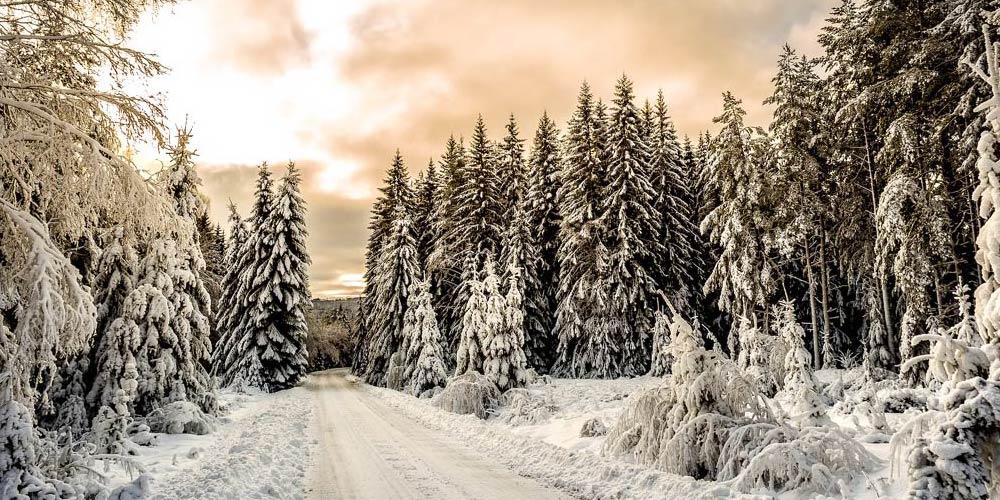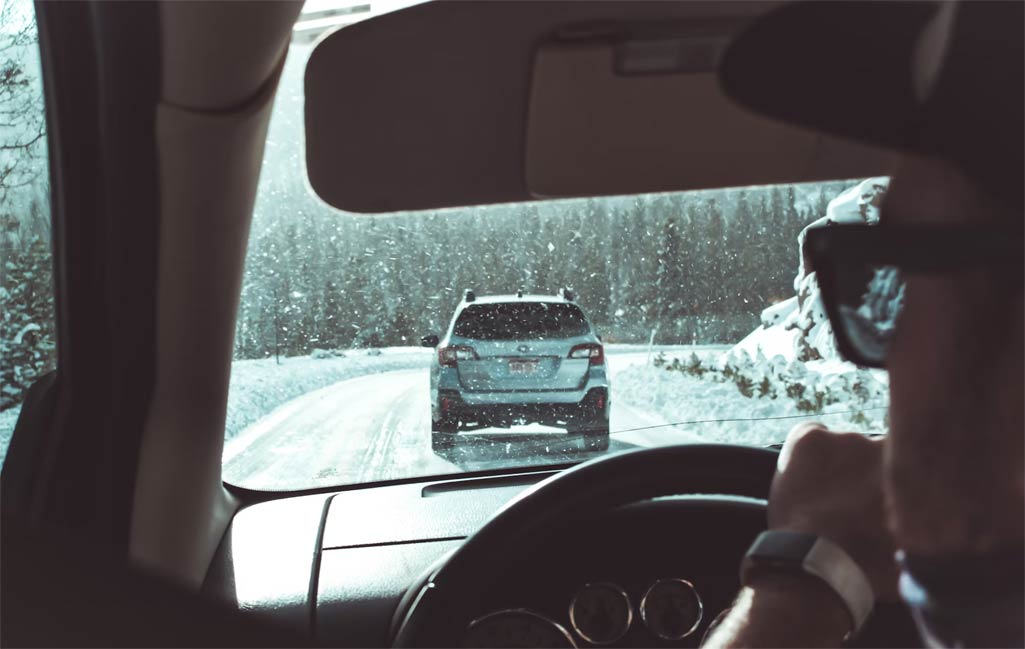
Winter Driving in Port Orchard Washington, Are You Prepared?
As the winter season blankets Port Orchard, Washington, with snow and ice, the challenges of driving demand heightened awareness and preparation. At Becker Franklin Rovang PLLC, we understand the critical importance of being well-prepared for winter driving. In this blog post, we provide you with a wealth of essential tips and strategies to ensure your safety during these snowy winter months.
Moderate Your Speed on Snow and Ice
Moderating your speed on snow and ice-covered roads is a fundamental aspect of winter driving safety in Port Orchard, Washington. The snowy conditions significantly reduce tire traction, increasing the risk of skidding.
By driving at a reduced speed, you allow yourself more time to react to potential road hazards and maintain better control of your vehicle. Remember, stopping distances can be up to ten times longer on snow and ice than on dry roads, making it essential to adjust your speed accordingly.
Lowering your speed in winter conditions is the cornerstone of safe and responsible driving in Port Orchard’s challenging winter weather.
Gradual Braking and Acceleration
When it comes to winter driving, gentle and gradual braking and acceleration are your best friends. Abrupt maneuvers can lead to a loss of vehicle control on icy or slippery surfaces, increasing the risk of accidents.
To maintain control and prevent skids, it’s crucial to brake and accelerate gently. Gradual braking involves applying light pressure to the brake pedal and slowly increasing it, allowing the vehicle to decelerate smoothly without losing tire grip.
Similarly, for acceleration, a slow and steady increase in speed helps the tires grip the road and prevents skidding. This careful approach to braking and accelerating is essential for safe winter driving in Port Orchard’s cold and snowy conditions.
Check the Forecast Regularly
Regularly checking the weather forecast is a proactive strategy for safe winter driving. Port Orchard’s winter weather can change rapidly, and staying informed about the current and upcoming conditions is essential. This practice allows you to make informed decisions about your travel plans.
For instance, if severe winter weather is expected, you might choose to delay your trip or take an alternative route to avoid the worst conditions.
By staying informed about the weather, you can plan your journeys more effectively and ensure that you’re prepared for the specific conditions you’ll encounter on Port Orchard’s winter roads.
Extra Caution on Bridges and Overpasses
In Port Orchard, bridges and overpasses require extra caution during the winter months. These structures tend to freeze before the rest of the road due to their exposure to cold air on all sides. The unique dynamics of bridges and overpasses make them susceptible to freezing, even when the rest of the road seems clear.
Therefore, it’s crucial to slow down and exercise extra caution when approaching and crossing these structures. Maintaining a lower speed on bridges and overpasses provides you with more time to react if you encounter icy patches, ensuring your safety and that of other road users in Port Orchard’s challenging winter conditions.
Safe Distance from Snowplows
While snowplows play a vital role in keeping Port Orchard’s roads clear of snow and ice, they can also create temporary hazards for other drivers. Snowplows often stir up clouds of snow that can significantly reduce visibility for vehicles following too closely.
This reduced visibility makes it challenging to spot road hazards, other vehicles, or even the road itself, increasing the risk of accidents. To stay safe, maintain a safe distance from snowplows when encountering them on Port Orchard’s winter roads.
By keeping a reasonable distance, you not only protect yourself from reduced visibility but also allow the plow drivers the space they need to work safely, contributing to safer driving conditions for everyone.
Keep Your Gas Tank Full
Maintaining at least a half-full gas tank is a strategic move for safe winter driving in Port Orchard. This practice offers several advantages during the winter months.
Firstly, it reduces the risk of fuel line freezing, a common issue in cold temperatures. In freezing conditions, moisture present in the fuel lines can freeze and potentially block the flow of fuel to the engine, hindering the vehicle’s ability to start. A fuller tank limits the amount of air and moisture above the fuel, decreasing the likelihood of condensation and freezing.
Secondly, a half-full or full gas tank adds weight to the vehicle, which can be beneficial, especially for rear-wheel drive vehicles. The extra weight enhances traction, a critical factor in maintaining control on icy or snowy roads in Port Orchard. Additionally, having enough fuel ensures you can keep the heater running if you become stuck or experience unexpected delays, reducing the risk of hypothermia and enhancing your safety.
Thorough Deicing of Windshield and Windows
Before embarking on your winter journey in Port Orchard, it’s essential to dedicate a few extra minutes to thoroughly deicing your vehicle’s windshield and windows. Clear visibility is paramount for safe driving. This means not only clearing a small area on the windshield but ensuring that every window, including side and rear windows, is completely free of ice and snow.
Comprehensive deicing provides you with 360-degree visibility, a vital component of safe driving. Remember to clear snow from the car’s roof, hood, and trunk as well. Snow left on the car can become a hazard if it dislodges while you’re driving, obstructing your view or posing a danger to other vehicles.
By taking the time to ensure that your vehicle is entirely clear of ice and snow, you not only enhance your safety but also contribute to the safety of all road users in Port Orchard’s winter conditions.
Well-Stocked Emergency Kit
Carrying a well-stocked emergency kit in your vehicle is particularly important during Port Orchard’s winter months. This kit should include essential items such as blankets for warmth in case of breakdowns or stranding, a flashlight for visibility in low-light conditions, and a shovel to help you dig your car out of snow if necessary.
A first-aid kit is crucial for addressing any medical needs, while jumper cables can come in handy for common cold weather battery issues. Additionally, it’s essential to have non-perishable food and water on hand in case you’re stranded for an extended period. A phone charger ensures that you can maintain communication capabilities in case of emergencies.
Consider adding a tow rope to your kit, which can be invaluable for vehicle extraction from ditches or snowbanks. Carrying salt or cat litter can provide traction if your vehicle gets stuck, and a windshield scraper is vital for maintaining clear visibility.
Finally, a small fire extinguisher can address minor fire emergencies. Each item in the emergency kit serves a specific purpose, ensuring that you’re equipped to handle various challenges that winter driving in Port Orchard may present, from vehicle malfunctions to severe weather conditions. This level of preparation not only enhances your safety but also contributes to the safety of fellow travelers on Port Orchard’s winter roads.

Increased Following Distance
Maintaining an increased following distance in winter conditions is a key safety measure for driving in Port Orchard, Washington. While a safe following distance on dry roads is typically three to four seconds, in winter conditions, this should be extended to eight to ten seconds.
The rationale behind this increase is straightforward yet critical: winter roads, often covered in snow, ice, or slush, significantly reduce your vehicle’s traction, braking efficiency, and overall handling. The extended following distance provides you with more time to react to unexpected situations, such as sudden stops, slippery patches, or erratic movements from other vehicles.
This additional time buffer is crucial because winter road conditions can be unpredictable. For instance, what appears to be a wet road might actually be covered in black ice, which is nearly invisible and extremely slippery.
Having an eight to ten-second buffer allows you to respond appropriately to these hazards without the need for sudden braking, which could cause skidding or loss of control. Moreover, increased following distance is beneficial not only for your safety but also for the safety of other drivers. It reduces the likelihood of rear-end collisions and allows everyone on the road more space to maneuver safely in adverse conditions.
Handling Skids Correctly
Handling skids correctly is a crucial aspect of safe winter driving, particularly in Port Orchard’s winter conditions. If your vehicle starts to skid, the first and most important step is to remain calm. Panic can lead to over-correction, which might make the skid worse. Gently steering in the direction you want the car to go, a technique known as ‘steering into the skid,’ helps realign the vehicle’s direction with your intended path.
It’s essential to avoid sudden movements or braking during a skid, as these can exacerbate the situation. Instead, make smooth, controlled movements. For vehicles equipped with an anti-lock braking system (ABS), apply firm, continuous pressure on the brake pedal if you need to brake during a skid. The ABS is designed to prevent the wheels from locking and allows you to maintain steering control.
In vehicles without ABS, gently pump the brakes instead of applying continuous pressure. This method helps prevent the wheels from locking up and assists in regaining traction. Remember, different types of skids require different responses, so understanding your vehicle’s behavior and practicing in a safe environment can be beneficial.
Avoiding Stops on Hills
Navigating icy hills in Port Orchard’s winter conditions can be challenging. Stopping on a hill presents a particular risk, as there’s a higher chance of the vehicle sliding backward or losing control when trying to regain momentum.
Therefore, it’s advisable to avoid stopping on a hill whenever possible. If you find yourself needing to stop while ascending a hill, it’s best to try and keep the vehicle moving, even if it’s at a very slow pace.
This strategy involves maintaining a steady, slow speed as you approach and drive up the hill, allowing the vehicle to carry enough momentum to reach the top without stopping.
The key is to be gentle with the accelerator to avoid wheel spin, which can occur if you accelerate too quickly on the slick surface. If you must stop on a hill, do so only when absolutely necessary, and try to plan so that you stop in a less steep area.
Once stopped, starting again slowly and steadily, without sudden acceleration, will help prevent the wheels from spinning and losing traction. Remember, the goal is to maintain enough control and momentum to reach a flatter and safer area to stop if needed.
Regular Tire Inspection
Check your tires frequently for proper inflation and tread depth. Winter tires are recommended in areas with regular snowfall for better traction.
Winter driving requires vigilance and preparation. Accidents can still happen due to the negligence of others. If you’ve been involved in a winter driving accident, Becker Franklin Rovang PLLC’s experienced car accident attorneys are here to help. Reach out to us at 360-876-4800 for dedicated legal support.
Stay safe this winter on Washington’s icy roads with these tips and remember, Becker Franklin Rovang PLLC is here to assist in the unfortunate event of a road accident.